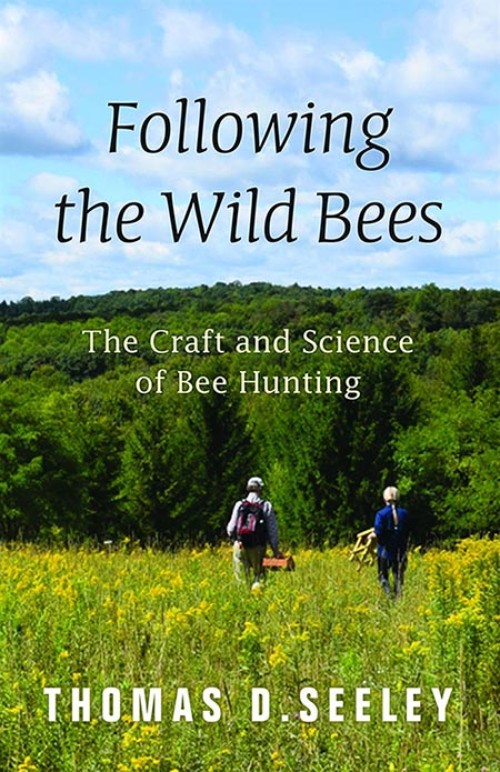by Thomas D. Seeley
Princeton University Press, 2016
Have you, too, been annoyed by books that should have been abbreviated and published as pamphlets – how to change a tire, organize your garage, or how to make kimchi? I was ever so slightly on guard when I saw that a whole book was devoted to tracking wild honeybees from a sunny patch of goldenrod to their home in a hollow in a tree in the woods.
But I backed off quickly when I saw that Thomas D. Seeley was the author. His honeybee investigations over the past 40 or so years have solved long-standing mysteries about honeybees and discovered honeybee behavior that no one even knew existed. The hunt described in this book is for adventure and the joy of discovery, not for honey – no bees are harmed.
Bees kept in hives by beekeepers are fascinating creatures, but Seeley has extra admiration for the wild ones that get by without the free housing, possible pesticides, and (sometimes) sugar syrup that the domesticated ones receive.
The book has two nicely interwoven strands. First, it is indeed a straightforward instruction manual on how to find wild bees in a tree, and succeeding at this is not nearly as simple as you might think. Starting with a bee box, a clever two-chambered contraption, a few bees are trapped as they gather nectar from flowers. Then, the bees are allowed to tank up on irresistible anise-scented honey in the hope that they will make a beeline home and come back for more, ideally bringing a bunch of their sisters with them.
The second strand involves understanding why bees behave as they do; that makes finding their home possible, and at every step of the way Seeley gives us the how and why. His blow-by-blow descriptions and detailed notes on his many past bee hunts give a sense of both the excitement Litof the chase and the dogged attention and thought needed for it all to work out. Beginner’s luck during his first few bee hunts resulted in finding the beehives in less than an hour. But it often takes him several days – in one case three years and eighteen days – to find bee homes.
Nectar and pollen are sometimes abundant and sometimes meager, so wild bee colonies must make huge adjustments in the numbers of bees that process honey and those that do the gathering. This goes smoothly thanks to marvelously intricate communications systems. This variability can make following the bees a challenge. Seeley’s carefully paint-coded foragers may return to the nest only to find that the place is overly full of raw materials, in which case they are unlikely to return to the bee box. Timing the hunt to coincide with a mediocre honey flow works better than hunting when there’s an excess of nectar.
And a beeline isn’t always a beeline, because heavily loaded fliers may choose to go around an obstacle, like a hill, instead of over it – which he learned the hard way. As explained in the book, sometimes math is involved in determining the possible locations of bee homes. Seeley has carefully calculated the airspeeds of loaded and empty bees, but the distance to the hive is calculated using the fastest round trips, because some bees get occupied at the nest and don’t hurry back.
The book has several extended sidebars, which he calls “Biology Boxes.” One describes how bees choose a nest site, which helps when you’re searching for the glint of shining wings as they enter a cavity high in a tree. Another explains how the dance done by successful foragers shows bees in the nest where to find nectar, and another tells how bees navigate. The photographs, charts, maps, and diagrams are useful and lovely.
Anyone who is only mildly interested in bees is likely to be charmed by this elegant book and its author. We get to go out with Seeley, often accompanied by friends, on many hunts and share his fun – and sometimes frustration – as he tracks down what he calls “the most intelligent and behaviorally versatile insects in the world.” At 150 pages, this book is way too short. I could have happily sailed through twice that many pages.


